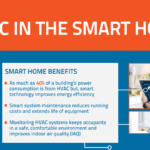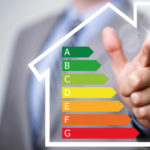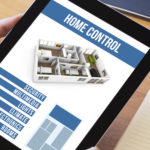The HVAC industry has seen a large growth recently in the adoption of smart home technology. Integrating this technology into HVAC systems provides real-time monitoring to the homeowner.
Smart thermostats manage when and how a space is heated and cooled and can provide cost savings to homeowners by more efficiently managing energy usage.
With remote monitoring, HVAC professionals can assist their customers when a problem is detected without needing to make a site visit. This particular feature is very beneficial at present with the COVID-19 pandemic and the necessity of social distancing. Reducing the physical time on site is both more efficient in terms of reducing truck rolls, but also follows best practices for social distancing protocols.
Smart Thermostats
When it comes to zoning, the most significant change to the HVAC industry over the last several years has been the widespread availability and adoption of smart home technology.
Wi-Fi thermostats introduced consumers to the world of cost-efficient smart heating in their homes. Today’s consumers expect and demand more finite control over their household temperatures.
When combined with smart motorized dampers — and a well-designed HVAC system of efficient ducts, diffusers, and registers — Wi-Fi thermostats can reach their full potential.
In a smart zoned HVAC system, the homeowner can set, adjust, and schedule precise temperatures in various parts of the home — such as room by room, floor by floor, or area by area — from a central control panel or app on their smart device.
This can result in significant savings on a homeowner’s energy bill (by as much as 30%) as well as extend the life of HVAC equipment, since it’s not working as hard to continually heat or cool the entire home.
Smart Sensors
The easiest way to add leak or flood protection to a home is with smart water sensors. These Wi-Fi connected devices install in minutes and require no cutting, soldering, or plumbing expertise whatsoever.
They function very simply: You place the sensor on the floor in high-risk areas, such as near a water tank, underneath a sink, or behind a washing machine. If the sensor gets wet or even detects an unusual amount of moisture, it will send an instant alert via text or email to the homeowner. Some water sensors even include an alarm that will ring inside the home.
Many of these smart water sensors also include dedicated smartphone apps, that can monitor and control sensors remotely. All in all, they’re not the most robust solutions to protect against major leaks and floods, but they’re certainly better than nothing.
Remote Monitoring
For customers, there are two big benefits of a remotely monitored system. It allows HVAC professionals to monitor and assess a HVAC system without performing a site visit. During the COVID-19 pandemic this supports social and physical distancing safety protocols. Regularly scheduled checkup calls can be done remotely and techs only have to go on-site when a clear issue is identified.
The second benefit is that remotely monitored systems tend to last longer. With HVAC pros remotely monitoring and maintaining the system, the system is optimized, and the equipment is more efficient. This further reduces the need for on-site repairs and wholesale replacement.
Right now, commercial business owners are looking for ways to reduce spending and the number of occupants in their buildings. Remote monitoring aligns with both of these pressing needs.
There are two main ways to provide your customers with remote monitoring services. You can provide the service yourself, or you can partner with a third-party monitoring company.
Managing it yourself offers higher gross margins over the long term but requires some upfront investment in equipment and training. As the number of systems your business is actively monitoring grows, you may also need to designate staff to the task full-time.
If you choose to partner with a third-party company that specializes in remote monitoring, you can get going relatively quickly without any significant investments in new equipment or training.
HVAC as a Service
HVAC as a service (HVACaaS) takes remote monitoring to a new level, with equipment manufacturers bundling remote monitoring subscriptions with their equipment directly.
The world is changing at a rapid pace because of COVID-19. Now is the time for HVAC firms to consider every opportunity to innovate. Those who survive and even thrive during this period of adversity will be the ones willing to adapt.



